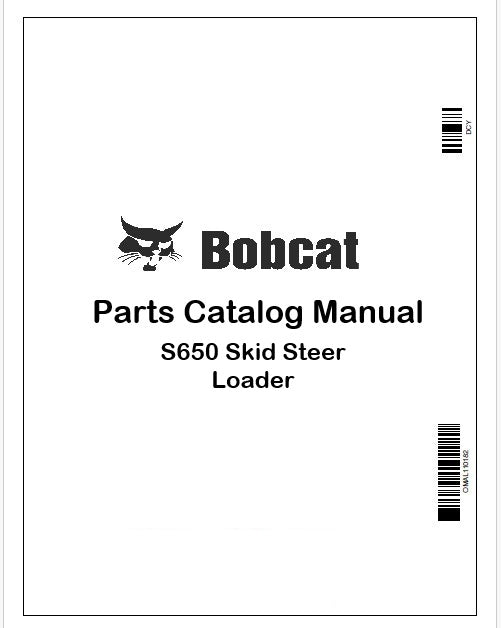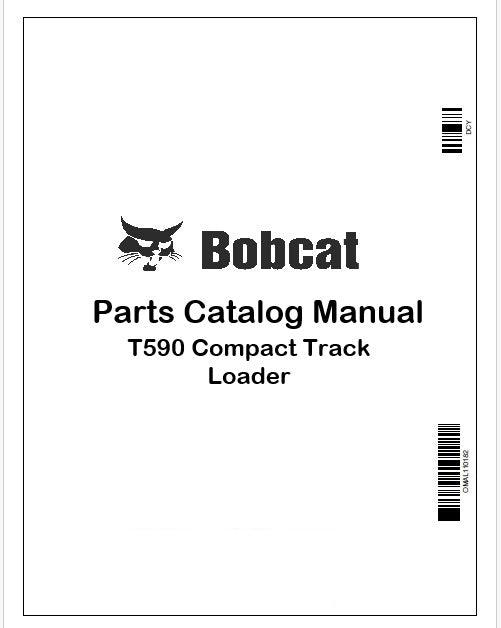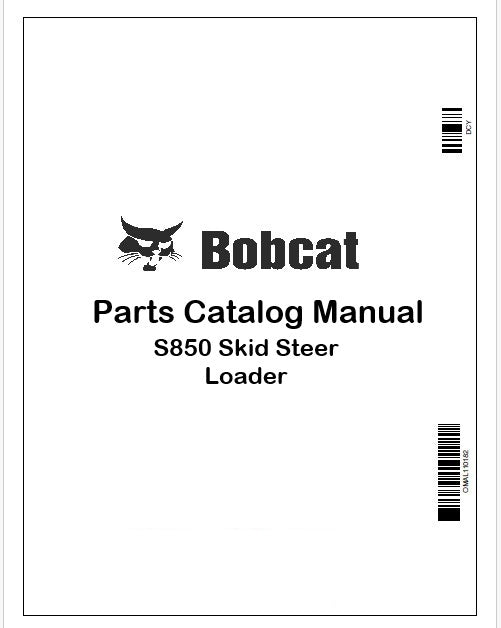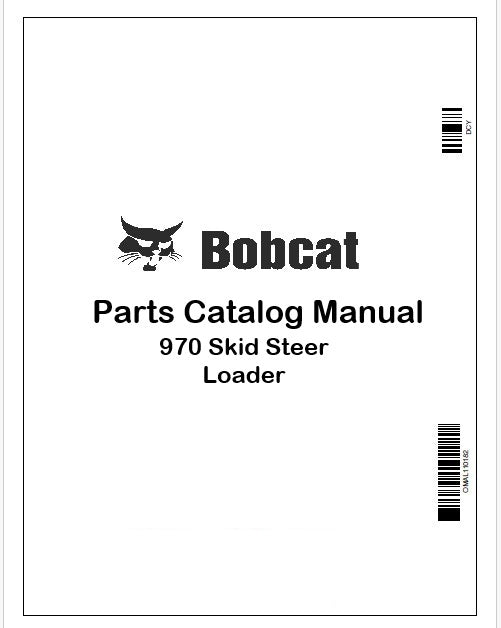
How to Diagnose and Fix Hydraulic Lift Problems in Bobcat Skid Steer Loaders
Share
Hydraulic lift problems in Bobcat skid steer loaders can grind your landscaping, construction, or material handling tasks to a halt, manifesting as slow arm raising, drifting buckets, or complete failure to lift loads. If you're searching for how to diagnose and fix hydraulic lift problems in Bobcat skid steer loaders, this guide is your go-to resource for models like the S650, T590, or S850. These compact powerhouses from Bobcat Company rely on robust hydraulic systems to power lift arms and attachments, but issues like fluid contamination, worn cylinders, or pump failures are rampant in dusty job sites. As a heavy equipment mechanic, owner, or enthusiast, understanding the lift circuit—from pump to cylinders—enables quick fixes, slashing downtime and repair expenses. Bobcat's vertical-lift or radial-lift paths demand precise pressure, so tackling these issues head-on ensures safety, efficiency, and machine longevity in demanding environments.
With high-hour usage accelerating wear, contamination accounts for over 70% of hydraulic woes per industry reports. Follow this detailed walkthrough to pinpoint and resolve lift arm troubles, keeping your Bobcat productive.
Table of Contents
- Overview of Hydraulic Lift Systems in Bobcat Skid Steers
- Common Hydraulic Lift Issues
- Step-by-Step Diagnosis Methods
- Repair Solutions for Lift Problems
- Preventive Maintenance Strategies
- Tools and Safety Precautions
- Conclusion
- FAQ
Overview of Hydraulic Lift Systems in Bobcat Skid Steers
Bobcat skid steer loaders feature integrated hydraulic systems where the lift function shares circuits with drive and auxiliary hydraulics for versatile operation.
Key Components
- Hydraulic Pump: Gear or piston type, engine-driven to generate flow; variable in high-flow models like the S850.
- Lift Cylinders: Dual rams extend to raise arms; seals prevent bypass.
- Control Valve: Spool-type directs fluid; solenoid-operated in deluxe panels.
- Hoses and Fittings: High-pressure lines route fluid; quick-couplers for attachments.
- Fluid Reservoir and Filters: Stores and cleans oil; return filters trap debris.
In the S650 vertical-lift model, self-leveling valves maintain bucket attitude, while the T590 compact track loader uses similar setups with rubber tracks adding stability. Pressure relief valves cap at 3,000-3,500 psi to protect components. Electronics in newer Bobcats monitor via the deluxe instrumentation panel for fault codes.
System Mechanics
Engine RPM drives the pump, sending fluid through valves to cylinders based on joystick input. Contaminants or air disrupt this, causing erratic lifts. Enthusiasts praise Bobcat's Power Bob-Tach for quick changes, but lift integrity is foundational for all tasks.
Check Out Related Bobcat Parts Catalog Manuals

Bobcat S650 Skid Steer Loader Parts Catalog Manual
Instant PDF Download
$39.90 USD

Bobcat T590 Compact Track Loader Parts Catalog Manual
Instant PDF Download
$39.90 USD

Bobcat S850 Skid Steer Loader Parts Catalog Manual
Instant PDF Download
$39.90 USD

Bobcat 970 Skid Steer Loader Parts Catalog Manual
Instant PDF Download
$39.90 USD
Common Hydraulic Lift Issues in Bobcat Skid Steers
Lift problems often signal broader hydraulic health concerns, escalating with neglect.
Slow or Weak Lifting
Arms raise sluggishly or struggle with loads, from low fluid or worn pumps.
Drifting or Sinking Arms
Bucket lowers unexpectedly when held, indicating cylinder seal leaks or valve spool wear.
Jerky or Erratic Movements
Choppy operation due to air in lines or contaminated fluid.
No Lift Function
Complete failure, often control valve solenoids or pump drive issues in the S650.
Unusual Noises Like Whining or Banging
Cavitation from low fluid or relief valve chatter.
Fluid Leaks
Visible drips around cylinders or hoses, leading to pressure drops.
Error Codes or Warnings
Dashboard alerts in the T590 for low pressure or sensor faults.
Operators report cylinder rod pitting in salty environments on the S850, while filter clogs plague dusty sites.
Step-by-Step Diagnosis Methods
Park on level ground, lower arms, and shut off engine before starting. Use Bobcat's Service Analyzer for advanced models.
Initial Visual and Fluid Inspection
- Check hydraulic fluid level in the sight glass—low if below mark; use Bobcat synthetic oil.
- Inspect for leaks: Scan cylinders, hoses, and valve block for wetness.
- Examine filters: Pull and check for metal particles or clogs.
- Test arm drift: Raise fully loaded and time drop (over 1 inch in 5 minutes signals issues).
Operational Tests
- Start engine and cycle lift: Note speed (normal 3-5 seconds full raise) and smoothness.
- Listen for noises at idle vs. full throttle.
Pressure Testing
- Tee in a gauge at lift port—operating pressure 3,000 psi in the S650.
- Low during lift points to pump; inconsistent to valves.
Cylinder and Valve Checks
- Disconnect rods and test extension manually for binding.
- Use a multimeter on solenoids (resistance 5-20 ohms); scan codes like HYD 12 for valve faults in the T590.
Air and Contamination Assessment
- Bleed lines if jerky: Open ports and cycle to expel bubbles.
- Sample fluid: Milky appearance means water; dark/burnt needs flush.
For the S850, verify auxiliary interlocks aren't overriding lift priority.
This narrows causes effectively, often revealing filters or seals as offenders.
Repair Solutions for Lift Problems
Cleanliness is paramount—use caps on lines to avoid dirt ingress. Reference torque specs from manuals.
Fluid and Filter Changes
- Drain and refill reservoir; replace filters every 500 hours.
- Flush system with clean fluid if contaminated.
Seal and Cylinder Repairs
- Reseal leaking cylinders: Kits include O-rings; hone bores if scored.
- Replace rods if pitted—torque head nuts to 200 ft-lbs.
Valve and Pump Fixes
- Clean or rebuild control valves; lap spools for sticking.
- Test pump flow; replace gears in gear pumps or swash plates in pistons for the S650.
Hose and Fitting Replacements
- Swap damaged lines; use thread sealant on fittings.
- Reroute to prevent chafing.
Electrical and Solenoid Solutions
- Repair wiring harness; replace solenoids if no click.
- Reset codes post-fix in the T590 panel.
Short paragraph: A cylinder reseal can halt drifting overnight, restoring full load capacity and preventing spills on uneven ground.
Preventive Maintenance Strategies
Proactive steps extend hydraulic life beyond 5,000 hours.
- Change fluid/filters per interval: 1,000 hours or annually.
- Inspect seals weekly in wet ops; grease pins daily.
- Warm up machine before loads to circulate fluid.
- Use breathers to block contaminants.
Bullet points:
- Daily: Leak checks and fluid level.
- Weekly: Cycle tests for jerkiness.
- Monthly: Pressure spot-checks.
Bobcat's Machine IQ telematics flags low pressures remotely on connected units.
Tools and Safety Precautions
Gear up for hydraulic work's pressures.
Essential Tools
- Pressure gauge kit and flow meter.
- Cylinder hone and seal installer.
- Service Analyzer scanner.
- Repair manuals with hydraulics—grab detailed ones at Manualsshop.com.
Safety Measures
- Relieve pressure via relief valve before disconnecting.
- Support arms with safety struts; wear eye protection for fluid sprays.
- Contain spills; hydraulics are slippery hazards.
Short paragraph: High-pressure fluid can penetrate skin like a needle—always bleed systems and use barriers to avoid injections requiring surgery.
Conclusion
Diagnosing and fixing hydraulic lift problems in Bobcat skid steer loaders—from drifts to weak raises—empowers you to maintain peak performance in tough jobs. These steps, from pressure tests to seal swaps, address core issues in models like the S650 or T590, while prevention curbs future headaches. Clean hydraulics are the backbone of Bobcat reliability, so regular care ensures safe, efficient lifts every time.
For Bobcat service manuals with lift schematics and diagnostic trees tailored to your model, visit Manualsshop.com—it's an essential hub for heavy equipment pros. Get lifting: Inspect that fluid today and power through your projects!
FAQ
What causes lift arm drift in Bobcat loaders?
Worn cylinder seals or holding valves—test with load hold.
How often change hydraulic fluid in S650?
Every 1,000 hours or yearly; use Bobcat oil.
Can contaminated fluid ruin Bobcat hydraulics?
Yes, it scores pumps—filter regularly.
Signs of bad lift pump in T590?
Whining, slow functions, or low pressure.
How to bleed air from Bobcat lift system?
Cycle arms with bleed ports open until smooth.
Is low fluid the main lift issue?
Often yes, but check for leaks too.
Common codes for hydraulic faults in S850?
HYD 05 for pressure low; scan to confirm.
When to reseal Bobcat cylinders?
If drifting or external leaks appear.
Safe to operate with jerky lifts?
No, risks tipping—diagnose ASAP.
Where to buy Bobcat hydraulic parts?
Dealers for OEM; match serial numbers.
